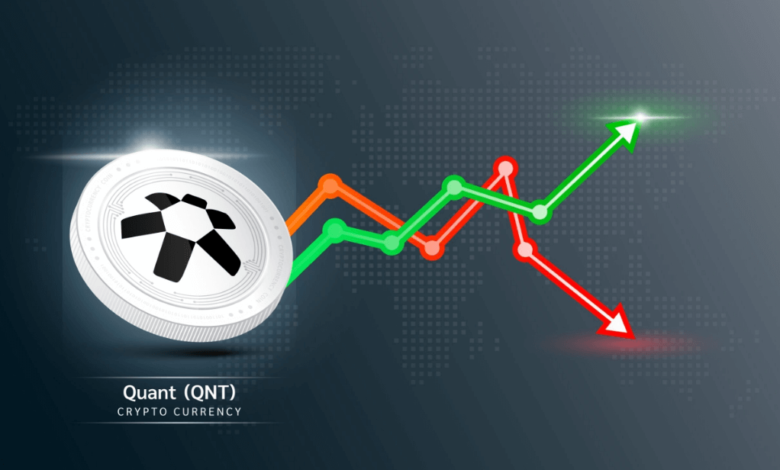The Future of Trading: Quant Price Prediction 2030

Welcome to the future of trading! With advancements in technology and data analysis, traders can now predict market trends with greater accuracy than ever before. One such method is through quantitative analysis, otherwise known as quant trading. In this blog post, we will explore the past, present, and future of trading using quant price prediction 2030 analysis techniques. Join us as we delve into the benefits and drawbacks of this approach and learn how it can be used to make accurate predictions for 2030 and beyond!
The Past, Present, and Future of Trading
The past of trading dates back to ancient civilizations where people exchanged goods and services with one another. Over time, methods of trade have evolved significantly, with the introduction of paper currency and electronic trading platforms. The present-day is dominated by algorithmic trading and high-frequency trading (HFT), which rely on complex computer algorithms to make rapid decisions in response to market fluctuations.
The future of trading looks even more promising as technology continues to advance. We can expect an increasing reliance on quantitative analysis techniques such as machine learning, artificial intelligence (AI), and data science that allow traders to analyze vast amounts of data quickly. In fact, some experts predict that AI-powered quant models will be responsible for up to 30% of all trades within the next decade.
What is Quant price prediction 2030 Analysis?
Quant price prediction 2030 analysis is a process of using mathematical and statistical models to analyze financial data. It involves identifying patterns, trends, and relationships in historical market data to predict future market movements.
Quantitative analysts use sophisticated algorithms to analyze large amounts of data quickly and accurately. These algorithms help traders identify trading opportunities that may not be apparent through traditional fundamental analysis.
The main advantage of quantitative analysis is its ability to remove emotional biases from the decision-making process. Instead of relying on intuition or gut instincts, traders can make informed decisions based on objective data.
The Benefits of Quantitative Analysis
Quantitative analysis has become a buzzword in the trading industry. It involves using mathematical and statistical models to identify patterns and trends in market data. There are several benefits of using quantitative analysis, which has made it increasingly popular among traders.
One advantage is that it eliminates human emotions from the decision-making process. Traders can be influenced by fear or greed, leading to irrational decisions that may result in significant losses. Quantitative analysis removes this bias and relies on objective data-driven strategies.
Another benefit is speed and efficiency. The use of algorithms allows for quick processing of vast amounts of data, enabling traders to make informed decisions faster than ever before.
The Drawbacks of Quantitative Analysis
While quantitative analysis can be incredibly helpful in making trading decisions, there are also drawbacks to relying solely on this method. One of the biggest issues is that it doesn’t always account for unpredictable events or anomalies.
Quantitative analysis relies heavily on historical data and mathematical models to predict future outcomes. However, unexpected events like natural disasters or sudden changes in government policies can significantly impact the market, rendering these predictions useless.
Another drawback of quantitative analysis is that it requires a significant amount of data processing power and resources. This means that smaller traders or those without access to advanced technology may not be able to implement these strategies effectively.
Additionally, relying solely on quantitative analysis can lead to a lack of human intuition and decision-making abilities. While numbers and statistics are important, they don’t always capture the full picture or emotional factors impacting the markets.
How to Use Quantitative Analysis in Trading
Quantitative analysis is a valuable tool for traders looking to make data-driven decisions. However, it can be overwhelming for those who are new to the practice. Here are some tips on how to use quantitative analysis in trading.
Firstly, start by identifying your goals and objectives. What do you want to achieve with your trades? Once you have a clear understanding of what you’re trying to accomplish, you can begin gathering data that will help inform your decision-making process.
Next, choose the right indicators and metrics for your strategy. There is no one-size-fits-all approach when it comes to quantitative analysis – the key is finding what works best for you and tailoring it accordingly.
Once you’ve gathered enough data, start testing different strategies using backtesting tools or paper trading accounts that simulate real-world market conditions without risking any actual money.
Always keep track of your performance metrics so that you can evaluate and adjust your strategy as needed over time. This will allow you to continually refine your approach as market conditions change. Read more…
Conclusion
To sum it up, the future of trading is undoubtedly leaning towards the use of quant price prediction 2030 analysis. The ability to utilize large amounts of data and apply an algorithmic approach can provide traders with a significant edge in the markets. However, it’s important to acknowledge that there are drawbacks to using this method as well.
The potential for overfitting models and not accounting for unforeseen events can lead to inaccurate predictions. It’s crucial to maintain a balance between relying on quantitative analysis and incorporating fundamental analysis, technical analysis, and market intuition.






